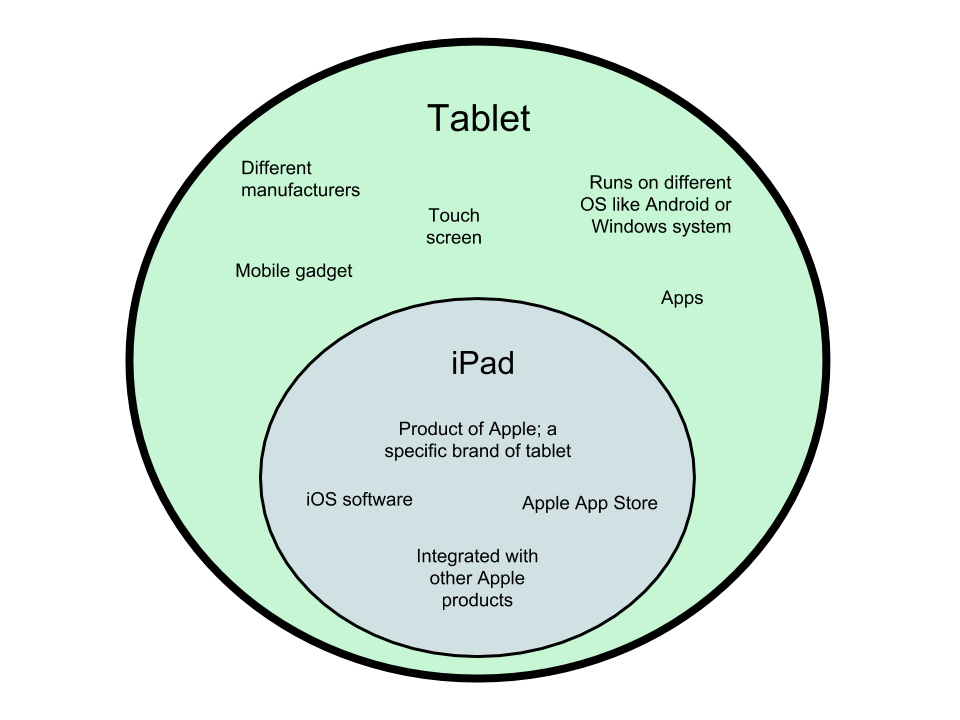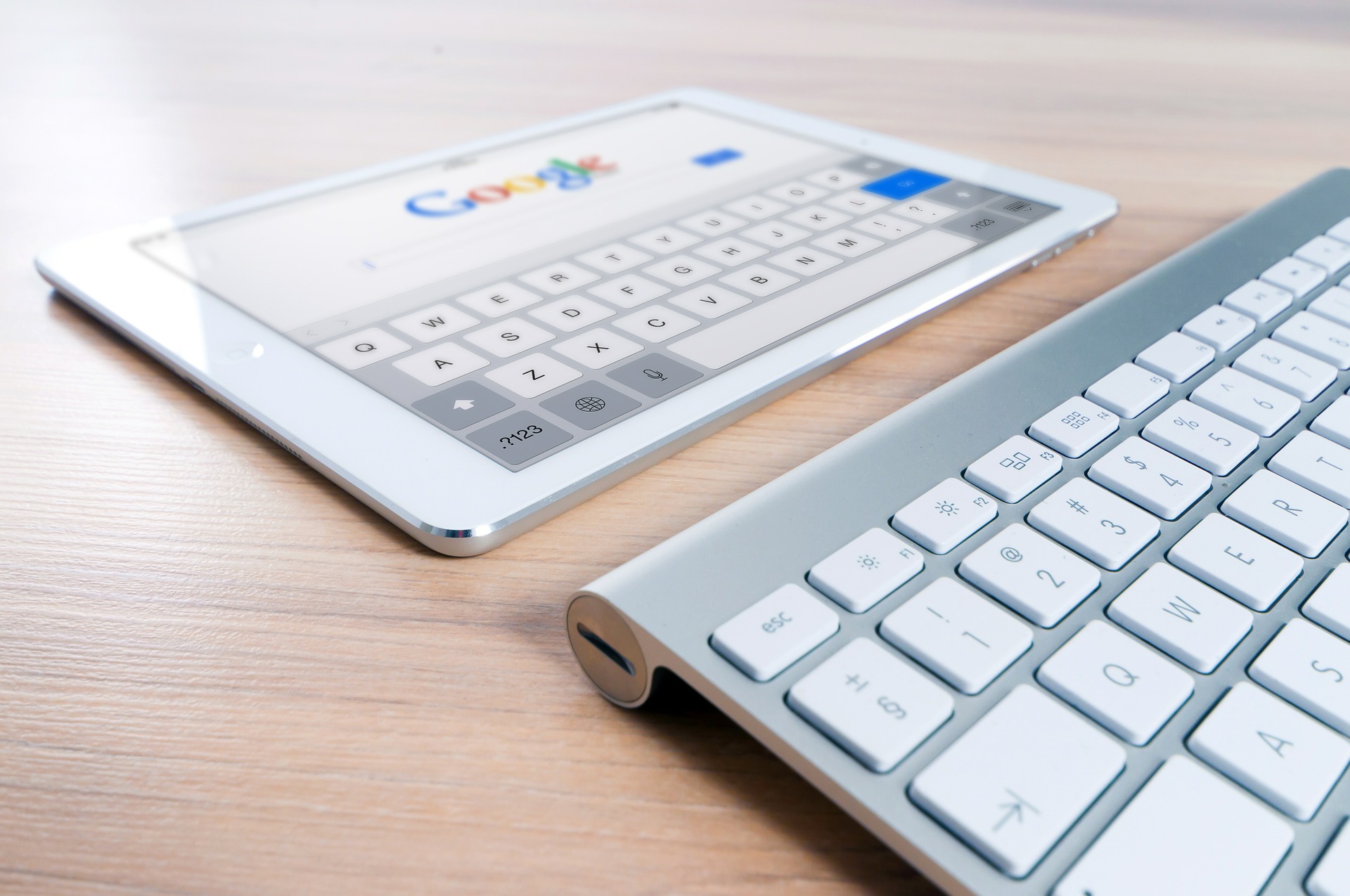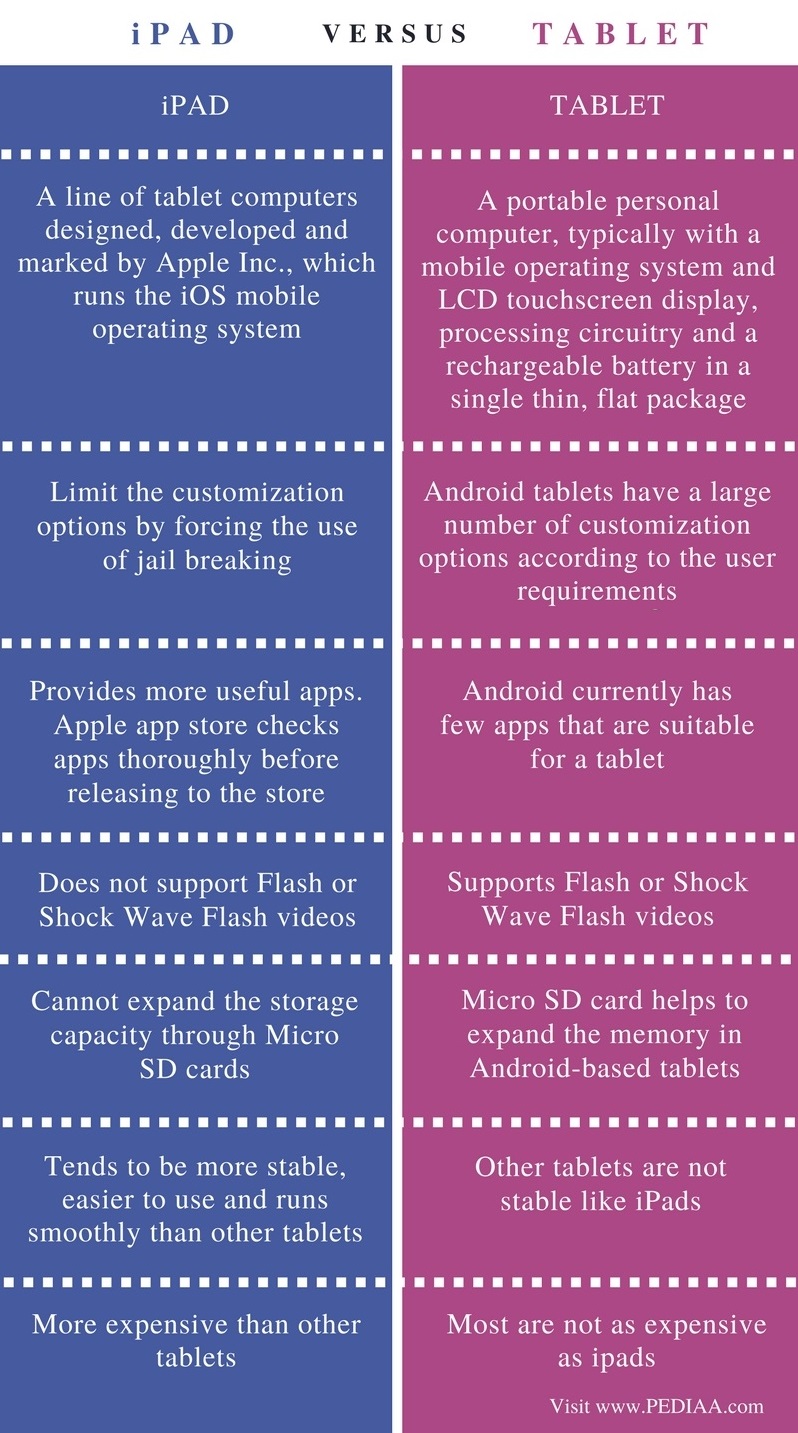When it comes to choosing a device for productivity, entertainment, or learning, the terms "iPad" and "tablet" often come up in conversations. While they may seem similar, there are distinct differences between the two that can significantly impact your decision. Understanding what sets an iPad apart from other tablets is crucial to making an informed purchase.
The world of technology is vast, and with numerous options available, it’s easy to get overwhelmed. However, by breaking down the key features and functionalities, we can better appreciate what makes an iPad unique compared to other tablets in the market.
In this article, we’ll explore everything you need to know about the differences between iPads and tablets, including hardware, software, ecosystem, and more. Whether you're a tech enthusiast or simply looking for the right device, this guide will help you make the best choice.
Read also:Unveiling The Magic The Voice Of Olaf In Disneys Frozen
Table of Contents
- Introduction to iPads and Tablets
- What is an iPad and What is a Tablet?
- Hardware Differences Between iPads and Tablets
- Software and Operating Systems
- The Importance of the Ecosystem
- Pricing and Value for Money
- Use Cases and Target Audience
- Performance and Battery Life
- Accessories and Add-ons
- Conclusion and Final Thoughts
Introduction to iPads and Tablets
iPads and tablets have revolutionized the way we interact with technology. They offer portability, convenience, and a wide range of functionalities that cater to various needs. However, the term "tablet" is broader, encompassing devices from different manufacturers, while an iPad is a specific product line from Apple.
Understanding the nuances between these devices can help you decide which one aligns better with your lifestyle and requirements. For instance, if you’re already invested in the Apple ecosystem, an iPad might be the obvious choice. On the other hand, Android tablets or Windows-based tablets may offer more flexibility and customization options.
Let’s dive deeper into the specifics to uncover the differences that matter most.
What is an iPad and What is a Tablet?
Defining iPads
An iPad is a line of tablets designed and developed by Apple Inc. Introduced in 2010, iPads quickly became synonymous with tablet computing due to their sleek design, powerful performance, and seamless integration with other Apple products. iPads run on iOS (or iPadOS), Apple’s proprietary operating system tailored for tablets.
Defining Tablets
A tablet, in general, refers to any portable computing device that features a touchscreen interface. Tablets come in various shapes, sizes, and configurations, with operating systems ranging from Android and Windows to Chrome OS. Unlike iPads, tablets from other manufacturers offer more variety in terms of hardware and software options.
Key differences include:
Read also:Comprehensive Guide To Rent Collection Services In Dc Metro
- iPads are exclusively made by Apple, while tablets are produced by multiple brands such as Samsung, Lenovo, Microsoft, and others.
- iPads run on iPadOS, whereas tablets may run on Android, Windows, or other operating systems.
- iPads are part of Apple's ecosystem, ensuring compatibility with iPhones, MacBooks, and other Apple devices.
Hardware Differences Between iPads and Tablets
When comparing iPads to tablets, one of the most noticeable differences lies in hardware. Apple is known for its high-quality build materials, premium displays, and cutting-edge processors. Here’s a breakdown of the hardware aspects:
Display Quality
iPads boast Retina displays with vibrant colors and sharp resolutions. For example, the iPad Pro features a Liquid Retina display with ProMotion technology, offering smoother animations and better responsiveness. In contrast, Android tablets vary widely in display quality, with some offering high-end AMOLED screens while others stick to budget-friendly LCDs.
Processor and Performance
Apple equips its iPads with custom-designed A-series or M-series chips, delivering exceptional performance for multitasking, gaming, and creative workflows. Android tablets, on the other hand, rely on processors from manufacturers like Qualcomm or MediaTek, which can sometimes lag behind in terms of speed and efficiency.
Software and Operating Systems
Software plays a critical role in determining the user experience. iPads run on iPadOS, a streamlined version of iOS optimized for larger screens. This operating system offers a consistent and intuitive interface, along with regular updates and security patches.
Customization vs. Control
While iPadOS provides a polished experience, Android tablets offer greater customization options. Users can modify settings, install third-party apps, and tweak the interface to suit their preferences. However, this flexibility often comes at the cost of consistency, as different manufacturers may implement their own UI skins on top of Android.
Windows tablets strike a balance between productivity and entertainment, allowing users to run desktop applications alongside mobile apps. This makes them ideal for professionals who require more robust software capabilities.
The Importance of the Ecosystem
Apple’s ecosystem is one of its strongest selling points. iPads seamlessly integrate with iPhones, MacBooks, AirPods, and other Apple devices through features like Handoff, AirDrop, and Universal Control. This interconnectedness enhances productivity and convenience, making it easier for users to switch between devices.
In contrast, Android tablets rely on Google’s ecosystem, which includes services like Google Drive, Gmail, and YouTube. While not as tightly integrated as Apple’s ecosystem, Google’s offerings provide a strong foundation for productivity and entertainment.
Pricing and Value for Money
Price is a significant factor when choosing between an iPad and a tablet. iPads are generally more expensive than their Android counterparts, reflecting Apple’s commitment to premium materials and advanced technology. However, this premium pricing also ensures longevity and reliability.
Cost Comparison
- iPad (9th Generation): Starting at $329
- iPad Air: Starting at $599
- iPad Pro: Starting at $799
- Android Tablets: Prices range from $100 to $800+, depending on the brand and specifications
While Android tablets may offer better value for money in some cases, it’s essential to consider the overall user experience and long-term satisfaction.
Use Cases and Target Audience
The intended use of the device largely dictates which option is better suited for you. iPads excel in creative tasks such as graphic design, video editing, and note-taking, thanks to apps like Procreate and Adobe Fresco. Additionally, the Apple Pencil enhances productivity for artists and professionals.
Target Audience
- iPads: Ideal for students, creatives, and professionals who prioritize ease of use and integration with other Apple devices.
- Android Tablets: Suitable for budget-conscious buyers, tech enthusiasts, and those who prefer a customizable experience.
- Windows Tablets: Best for power users and professionals who need access to desktop applications.
Performance and Battery Life
Performance and battery life are critical factors to consider when choosing a tablet. iPads are renowned for their long-lasting batteries, capable of lasting up to 10 hours on a single charge. This is partly due to Apple’s optimized hardware-software integration.
Battery Life Comparison
- iPad Pro: Up to 10 hours of web browsing
- Android Tablets: Varies widely, but most offer 8-12 hours of usage
- Windows Tablets: Typically around 8-10 hours, depending on the workload
Performance-wise, iPads tend to outperform many Android tablets, especially in demanding applications. However, high-end Android tablets and Windows devices can rival or even surpass iPads in certain scenarios.
Accessories and Add-ons
Accessories play a vital role in enhancing the functionality of your tablet. iPads offer a range of official accessories, including the Apple Pencil, Magic Keyboard, and Smart Folio. These accessories transform the iPad into a versatile tool for work, study, and creativity.
Popular Accessories
- Apple Pencil: Perfect for sketching, note-taking, and annotating documents.
- Magic Keyboard: Adds a full-sized keyboard for typing-intensive tasks.
- Third-Party Cases: Offer additional protection and customization options.
Android tablets also have a wide array of accessories, though they may lack the same level of integration and quality as Apple’s offerings.
Conclusion and Final Thoughts
In summary, the difference between iPads and tablets lies in their design philosophy, ecosystem, and intended use cases. iPads are premium devices tailored for seamless integration, creative workflows, and productivity. Meanwhile, Android and Windows tablets provide more flexibility and affordability, catering to diverse user needs.
Before making a decision, consider the following:
- Are you already part of the Apple ecosystem?
- Do you prioritize customization and flexibility?
- What is your budget and intended use for the device?
We encourage you to explore further by checking out our other articles on technology and gadgets. Don’t forget to share this article with your friends and leave a comment below if you have any questions or thoughts!


/001_what-is-the-difference-between-ipad-and-tablet-060a4ba5f2a3403694ae6b1d36d46361.jpg)
